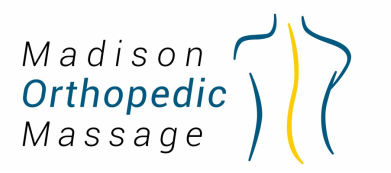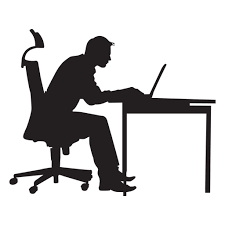Exactly why is too much sitting bad for you? Let's look a few obvious reasons.
The human body was designed for constant motion and activity. For hundreds of thousands of years, we spent most of the day walking, gathering, hunting and farming—competing for each calorie that we ate. People sat on the ground or on logs for brief periods to rest. There were no desks, recliners, or sofas.
Adults are now sitting around more than at any other time in history. Based on data from the American Heart Association, over 80 percent of all US jobs are now sedentary. The amount of time we spend sitting in front of screens, which tempt us with dopamine-driven feedback loops, is skyrocketing. And there can be rather serious consequences. Various studies have associated prolonged sitting with back pain, diabetes, obesity, cancer, and psychological distress. Some authors have gone so far as to describe chronic, prolonged sitting as “the new smoking,” a deadly habit.
Many American adults spend more than 12 hours per day sitting. How is that possible? Let’s take the example of a typical, unmarried office worker. He is seated at his computer desk or table for 80 percent of the time between 8:30 a.m. and 5:30 p.m., plus he spends an additional 5 hours a day on his smartphone or watching TV/Netflix outside of work. This is a daily grand total 12 hours and 12 minutes of sitting. People who are homebound can easily spend 16 hours a day sitting. If you add 8 hours of sleeping on top of a whole day of sitting, you can see just how much time we now spend sedentary.
The worst effect of sitting is that it leads to an overall degeneration of bodily tissues. “Sitting for too long causes your neuromuscular tissue (NMT), between your muscles and tendons, to decay. NMT is the second most ‘expensive’ tissue in the body to maintain after brain tissue. If you don’t use it, you’ll lose it,” says Dr. Bomi Joseph, Director of the Peak Health Center in California.
Here are 4 tips to help reduce the inherent risks of a sedentary job or lifestyle:
1. Try to Stand at Least Once Per Hour
To mitigate the effects of sitting all day, you really need to stand up at least once per hour. Getting up every 30 minutes is even better, according to a 2017 study published in the Annals of Internal Medicine. Stretch a little and walk around for at least one minute before sitting down again.
2. Exercise in Short, Frequent Intervals
If you are stuck sitting in an office all week, it can be tempting to try and cram your workouts into one long session during the weekend. But that isn’t as good for your body compared to several short, brisk walks or exercise sets throughout the day. You don’t have to do a full-on gym workout to get benefits, says Dr. Joseph. On breaks, you can walk around your workplace parking lot a few times or do some squats or jumping jacks in the hall.
3. Try Orthopedic Massage, Deep-Tissue Bodywork, Thai Massage, or Yoga
Sitting for too long can encourage our back, neck, and limbs to settle into unnatural postures. This can have a negative “domino effect” that impacts the alignment and comfort of other body parts. Deep-tissue body work such as Orthopedic Massage Therapy, Rolfing Structural Integration or traditional Thai massage can help a stiff body regain its natural range of motion. Doing yoga is soothing, it improves neuromuscular tissue and posture, and it is accessible to almost anyone. Yoga mats are available in most department stores and hundreds of instructional yoga videos are free to watch on YouTube.
4. Use Technology to Remind You to Stand
We all know the downsides of technology: distraction, addiction, and isolation. But new wellness technologies like the FitBit and Apple Watch have detailed movement and exercise tracking capabilities that can act as a motivating digital “coach” or mentor. The Apple Watch can track how much you sit and gently remind you to stand, move around, and exercise throughout the day. Set up your smartphone settings to limit screen time and block addictive websites. Use the “interval timer” app on your work computer to schedule regular standing breaks throughout the workday.
The study published in the Annals of Internal Medicine looked at data from nearly 8,000 older adults to examine the relationship between sitting and mortality. It found that sitting for long periods means there is a 24 percent higher chance that someone will die from health problems, an 18 percent higher chance of heart disease, and a whopping 91 percent increased risk of developing Type 2 diabetes. Sitting for too long can also have adverse effects on memory. The brain is packed full of blood vessels because it has an extremely high need for blood and oxygen. Sitting for too long encourages the heartbeat and circulation to slow to levels that are not nourishing enough for optimal brain function. Slow blood circulation can also cause swelling in the legs, varicose veins, or even deep vein thrombosis. Poor posture while sitting can also create pressure in the spine that eventually causes compressed spinal disks, which can lead to chronic back pain. And nobody wants that!
The bottom line is that sitting too long or too often is not good for you. Ride a bike instead of driving. Get off public transport one stop before your destination and walk the remainder. Move, stretch, and get regular massage therapy. Your legs, your lungs, your back, your brain, and your entire body will appreciate it. Health is priceless and the rewards are well worth the effort.
Resources
Tags:
Fitness
Health
Movement
The human body was designed for constant motion and activity. For hundreds of thousands of years, we spent most of the day walking, gathering, hunting and farming—competing for each calorie that we ate. People sat on the ground or on logs for brief periods to rest. There were no desks, recliners, or sofas.
Adults are now sitting around more than at any other time in history. Based on data from the American Heart Association, over 80 percent of all US jobs are now sedentary. The amount of time we spend sitting in front of screens, which tempt us with dopamine-driven feedback loops, is skyrocketing. And there can be rather serious consequences. Various studies have associated prolonged sitting with back pain, diabetes, obesity, cancer, and psychological distress. Some authors have gone so far as to describe chronic, prolonged sitting as “the new smoking,” a deadly habit.
Many American adults spend more than 12 hours per day sitting. How is that possible? Let’s take the example of a typical, unmarried office worker. He is seated at his computer desk or table for 80 percent of the time between 8:30 a.m. and 5:30 p.m., plus he spends an additional 5 hours a day on his smartphone or watching TV/Netflix outside of work. This is a daily grand total 12 hours and 12 minutes of sitting. People who are homebound can easily spend 16 hours a day sitting. If you add 8 hours of sleeping on top of a whole day of sitting, you can see just how much time we now spend sedentary.
The worst effect of sitting is that it leads to an overall degeneration of bodily tissues. “Sitting for too long causes your neuromuscular tissue (NMT), between your muscles and tendons, to decay. NMT is the second most ‘expensive’ tissue in the body to maintain after brain tissue. If you don’t use it, you’ll lose it,” says Dr. Bomi Joseph, Director of the Peak Health Center in California.
Here are 4 tips to help reduce the inherent risks of a sedentary job or lifestyle:
1. Try to Stand at Least Once Per Hour
To mitigate the effects of sitting all day, you really need to stand up at least once per hour. Getting up every 30 minutes is even better, according to a 2017 study published in the Annals of Internal Medicine. Stretch a little and walk around for at least one minute before sitting down again.
2. Exercise in Short, Frequent Intervals
If you are stuck sitting in an office all week, it can be tempting to try and cram your workouts into one long session during the weekend. But that isn’t as good for your body compared to several short, brisk walks or exercise sets throughout the day. You don’t have to do a full-on gym workout to get benefits, says Dr. Joseph. On breaks, you can walk around your workplace parking lot a few times or do some squats or jumping jacks in the hall.
3. Try Orthopedic Massage, Deep-Tissue Bodywork, Thai Massage, or Yoga
Sitting for too long can encourage our back, neck, and limbs to settle into unnatural postures. This can have a negative “domino effect” that impacts the alignment and comfort of other body parts. Deep-tissue body work such as Orthopedic Massage Therapy, Rolfing Structural Integration or traditional Thai massage can help a stiff body regain its natural range of motion. Doing yoga is soothing, it improves neuromuscular tissue and posture, and it is accessible to almost anyone. Yoga mats are available in most department stores and hundreds of instructional yoga videos are free to watch on YouTube.
4. Use Technology to Remind You to Stand
We all know the downsides of technology: distraction, addiction, and isolation. But new wellness technologies like the FitBit and Apple Watch have detailed movement and exercise tracking capabilities that can act as a motivating digital “coach” or mentor. The Apple Watch can track how much you sit and gently remind you to stand, move around, and exercise throughout the day. Set up your smartphone settings to limit screen time and block addictive websites. Use the “interval timer” app on your work computer to schedule regular standing breaks throughout the workday.
The study published in the Annals of Internal Medicine looked at data from nearly 8,000 older adults to examine the relationship between sitting and mortality. It found that sitting for long periods means there is a 24 percent higher chance that someone will die from health problems, an 18 percent higher chance of heart disease, and a whopping 91 percent increased risk of developing Type 2 diabetes. Sitting for too long can also have adverse effects on memory. The brain is packed full of blood vessels because it has an extremely high need for blood and oxygen. Sitting for too long encourages the heartbeat and circulation to slow to levels that are not nourishing enough for optimal brain function. Slow blood circulation can also cause swelling in the legs, varicose veins, or even deep vein thrombosis. Poor posture while sitting can also create pressure in the spine that eventually causes compressed spinal disks, which can lead to chronic back pain. And nobody wants that!
The bottom line is that sitting too long or too often is not good for you. Ride a bike instead of driving. Get off public transport one stop before your destination and walk the remainder. Move, stretch, and get regular massage therapy. Your legs, your lungs, your back, your brain, and your entire body will appreciate it. Health is priceless and the rewards are well worth the effort.
Resources
- www.forbes.com/sites/davidsturt/2015/01/13/is-sitting-the-new-smoking/#603964a24fd4
- www.countable.us/dr.bomi.joseph
- https://annals.org/aim/article-abstract/2653704/patterns-sedentary-behavior-mortality-u-s-middle-aged-older-adults
Tags:
Fitness
Health
Movement


 RSS Feed
RSS Feed